When Maestros encouraged applause between movements
mainIn the course of a lively Twitter colloquium on a thorny topic, the Detroit critic Mark Stryker produced this letter from music director Osip Gabrilowitsch, dated October 1931.
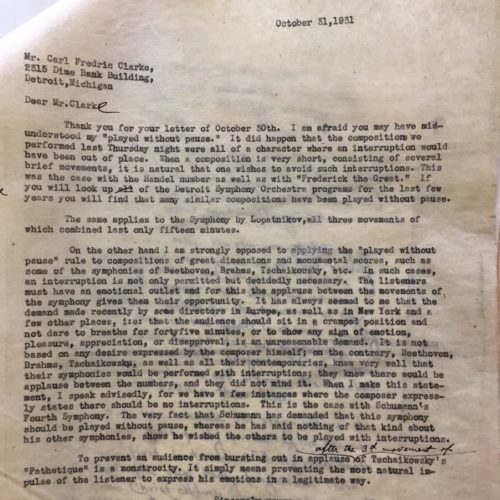
In it, Gabrilowitsch says: ‘It has always seemed to me that the demand made recently by some directors in Europe, as well as in New York and a few other places, i.e. that the audience should sit in a cramped position and not dare to breathe for 45 minutes, or to show any sign of emotion, pleasure appreciation or disapproval, is an unreasonable demand. It is not based on any desire expressed by the composer himself; on the contrary, Beethoven, Brahms, Tchaikovsky as well as all of their contemporaries, knew very well that their symphonies would be performed with interruptions; they knew there would be applause between the numbers, and they did not mind it.’
Gabrilowitsch knew what he was talking about. A friend of Mahler and Rachmaninov, he observed great conductors at work in his career as a concert pianist and he emulated them from 1918 as founding director of the Detroit Symphony. Mark his words.
The debate was triggered by this tweet from Samara Ginsberg:
Here’s something you might not know about classical musicians: the vast majority of us don’t mind if you clap between movements, and many of us love it. We just want you to enjoy the concert and would never look down on someone showing appreciation.
— Samara Ginsberg (@samaracello) April 10, 2019

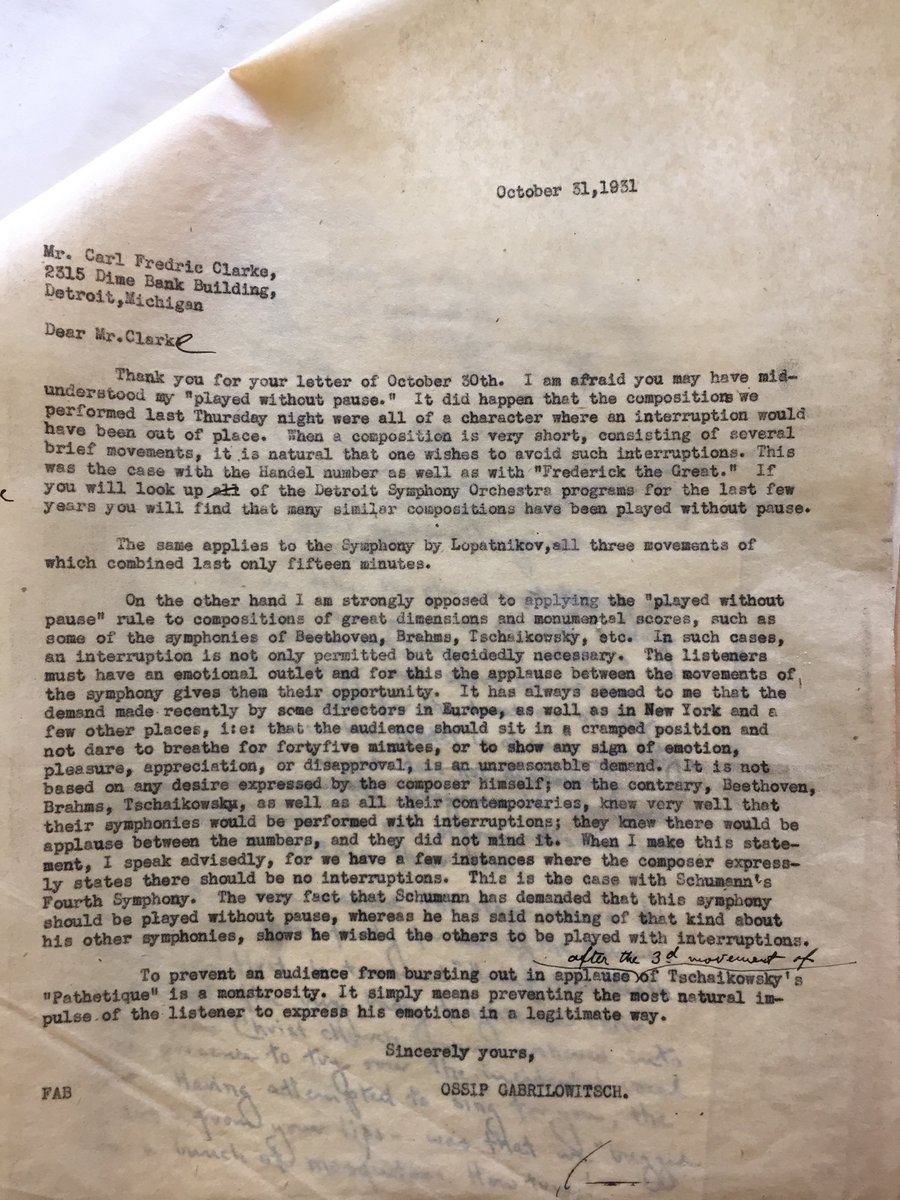
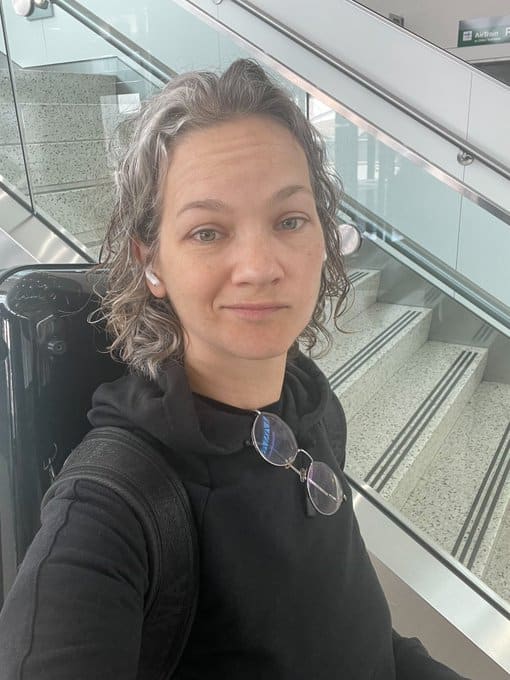
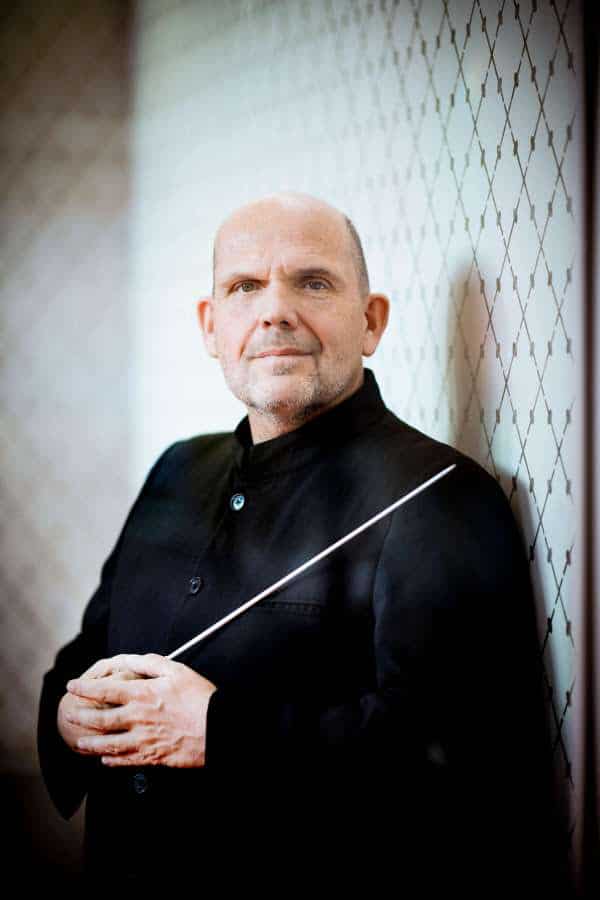

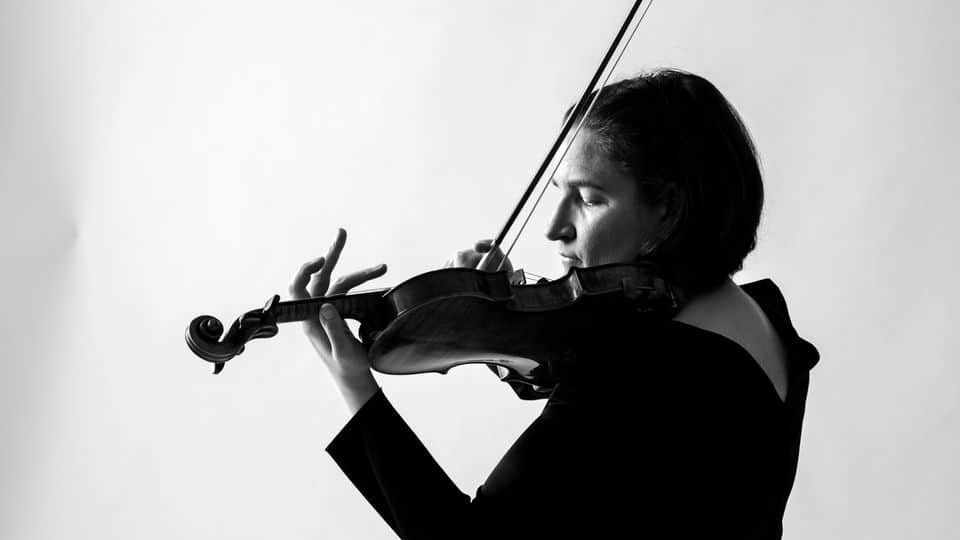
Wagner, similarly, forbade audiences at Parsifal from applause between the acts. The audiences wisely ignored him. It’s just a virtue-signalling affectation.
Are you sure about that? There is a Bayreuth tradition (now extinct) that one never applauds after the first act of Parsifal, due to the sacral nature of the ending of that act. One traditionally applauded freely after act II and after the end. I sort of always imagined that this was an idea of Cosima’s (like the strict Bayreuth-only restriction until 1913). Is there any source that this was Wagner’s own will, and that it was extended also to the ending of act II?
As far as I know, Wagner never forbade clapping after his acts. Probably his wife, intent on stamping a religious character on Bayreuth, thought that after the feierliche conclusion of the Gral scene at the end of act 1, one should keep the sacral atmosphere well into one’s ears as long as possible and well into the 2nd act to protect one’s sensitivities against all those sexy things going-on chromatically.
Fact is that during the première of Parsifal, there was a loud ‘Bravo! Bravo!’ and enthusiast clapping from someone in the audience just after the flowermaidens scene, and he was duly shushed by the audience. But it appeared to have been the composer himself.
It’s not extinct at BTFS. On my three Parsifals there, each of the three last productions in the last 15 years, last time in 2016, I’d say 4/5 of the auditorium didn’t applaud after the first act. Maybe a fifth did and got dirty looks from everyone else, so the applause died very quickly, almost instantly. The same phenomenon happened even more recently in places like Berlin and Munich.
It’s absolutely silly and unjustified, and I’m not going to defend it — but it’s kinda fun as a social experiment all the same, and it’s indeed a snobbish affectation. Whichever way you look at it, it’s definitely not extinct.
As the commentator immediately above said correctly, this whole rigmarole applies only to the Parsifal first act rather to everything Wagner wrote; and indeed this silly exhortation came from the delightful Cosima rather than from the man of whom she was the widow.
If we’re on the topic of being a snob in relation to Parsifal, it’s worth remembering that any snob in good order will correct hoi polloi who call Parsifal an “opera” by pointing out that it is no such thing; Parsifal is but a “stage consecration festival drama”. So there. That’s what the author himself insisted it was; this one can’t be blamed on Cosima.
Snobs will also correct the unwashed who claim the Ring is a “tetralogy” or that it consists of four operas. The Ring has but three operas in it, as any schoolboy knows. And a Prologue.
The trope “virtue-signalling” is becoming overused. In any case, who is more guilty, those breaking tradition by applauding between movements or those merely observing tradition.
some middle movements of symphonies seem to nearly force you to applaud such as the 3rd mov. of Brahms 4th or Tchaikovsky 6th. Would anyone care to list a few other examples too? However, on the contrary there are some movements where it could be very unsettling and disruptive for them to be preceded by applause. The first that comes to mind for me would be the 4th mov. of Brahms 1st. Surely others might be able to mention more places they would prefer NOT to have interrupted by applause.
I have vivid memories of a performance of Mahler’s ‘Lied von der Erde’ here in Toronto about 50 years ago, conducted by Seiji Ozawa, with Maureen Forrester and an estimable British tenor (whose name slips my mind at the moment) as soloists. A large percentage of the audience applauded lustily after every movement, as though the programme consisted of a series of amiable ditties about nothing in particular. The artists were clearly upset but pressed on as best they could. The evening was ruined.
A few weeks later I attended a recital by Ms Forrester that included Berlioz’s ‘Nuits d’Eté.’ At the end of every number her arms were folded in front of her, with palms facing outward, and they did not come down until the pianist had begun the next number. As intended, there was perfect silence until the end of the performance. I was grateful for that.
I also remember occasions, especially in performances of virtuoso concertos, on which spontaneous applause after a movement was appropriate. The point is that performances which, for the sake of the artists as well as the audience, deserve the interim tribute of silence should receive it.
There’s a NY Phil performance from the 60’s of dLvdE where the audience applauds between movements. I’d rather have that than the idiot who yells Bravo at the end of Der Abschied like a Concertgebouw performance I heard back in the 90’s.
A personal list.
Moments that sound weird without applause:
• Tchaikovsky: 1st movement of Piano Concerto #1, Violin Concerto, Symphony #4; 3rd mvt. of Symphony #6 (despite various conductors’ wishes to dive straight into the last movement: sorry guys, Tchaikovsky pretty much wrote an ovation into the piece despite your theories about hidden desperation 🙂 )
• Brahms: 1st mvt. of Violin Concerto and both piano concerti; 1st mvt. of 4th symphony, depending on how the conductor treats it
• Beethoven: 1st mvt. of the Emperor Concerto and symphonies 3 and 9 (the 1st movements of the other symphonies are short enough that it could seem like there’s no need for applause this soon; but the 1st mvts. of #5 and #7 could certainly warrant it)
We once had a piano soloist, playing Tchaikovsky, who made shushing gestures at the audience at the end of the first movement. It didn’t really work, and he rewarded their applause with scowls and eye-rolling. Then at the end of the piece, he leaped to his feet and gestured to the audience with an “everybody stand up” motion. He played fabulously, so they were on their way to their feet anyway; but it was kind of hilarious to see such old-fashioned prima-donna-ish behavior in real life.
What gets awkward for me sometimes — and I’m not blaming audiences for this, because it shows that they’re new, and I’m glad they came — is when, once they’ve applauded for the first movement, they think they’re duty-bound to applaud for every movement. E.g. when we did Brahms’ 4th recently: applause after the first movement, fine. But the applause after the slow movement sounded tentative and awkward, as if the people clapping didn’t really think the music called for it but thought they were supposed to. I would love it if people also felt comfortable enough not to clap between movements if they don’t feel like it. (I would borrow a quote from that Emanuel Ax article provided by Bart, though: “Just one favor – even if you don’t like a concert of mine, please PLEASE applaud at the end anyway.” 😀
That’s an amusing story about that prima donna soloist. My dear wife had no background in classical music whatsoever when I finally badgered her into coming to a concert with me. Tchaikovsky 1st Piano Concerto was on the program, and I could tell she was smitten throughout the first movement. She couldn’t resist applause at the end of the movement, which quickly turned to unnecessary mortification when she realized she was the only one clapping. At the end of the piece, I tried to tell her that it was absolutely fine, a natural and spontaneous reaction that the soloist probably loved. She had, after all, been riveted by the performance, having never attended that kind of concert before.
At just that moment, a middle aged man in the row in front of us turned around to lecture my wife that it had been very “rude” and “disruptive” to clap and that she should have known better. (Any symphony-goer has encountered this type of old-fogey, faux-aficionado in our concert halls.)
I gave him a piece of my mind, but it was hard to convince my wife to join me again, this experience having confirmed her stereotypic expectations of “fancy” music.
Likewise there are endings that I feel are diminished in intensity by applause or any other display. Respectful silence as you depart would be suitable after Tchaikovsky 6th, Mahler 9th (similar to the Tchaikovsky in the work’s overall path), possibly Mahler 6th and 4th and Das Lied, definitely Wozzeck. There are many others.
I don’t feel that way. I agree that a long silence at the end of those pieces is appropriate, but I also feel that the audience should have a chance to express appreciation for the performers. (Maybe my lens is colored by my being a performer, and I just want applause no matter what 🙂 )
I was once part of a Mahler 4 performance where the silence stretched on and on at the end. The conductor was tuned in to it, though — listening to the silence and judging its quality, just as he had with the music — and lowered his hand only when the tension in the room had dissipated. The ovation was relaxed but very long. Best of both worlds, I’d say.
(It might be a different story with a different piece: Mahler 4 has a happy ending; #9 and Tchaik 6 do not. It might feel more appropriate to leave the hall in solemn silence.) (And what about Shostakovich #8?)
When Yannick Nezet Seguin conducted Das Lied Von Der Erde in Montreal in 2008 he held the audience from applause for at least one entire minute. That’s when I knew he was going to be a huge international star.
True. It depends upon the piece in question. Maybe there should be indications in the programme booklet, with a little star, where one is permitted to express enthusiasm or grave displeasure.
Ha ha, John, that’s hilarious (although grave displeasure should of course be indicated with a frowny-face).
And the compositions in toto should be rated with stars and rosettes, as in The Penguin Guide.
The Schumann Fantasia Op.17 comes to mind. Applause seems appropriate after the middle movement rather than after the final movement. There are so many examples. All I’d ask is that applause be delayed for a few seconds after a sublime slow ending. I have discussed this with a few artists and they agreed (Peter Katin, Albert Ferber, Horowitz, Michelangeli, John Ogdon and others).
I remember hearing Kobrin play that piece and the applause after the middle movement went on so long that he turned to the audience and put his palms down to stop it.
“Sit in a cramped position and not dare to breathe?” Please…
As far as I can tell from the debate thread, the main objection is on the grounds of ‘disgusting elitism’ or something along those lines. What precisely is so disgusting and unacceptable about wanting to utilize the crucial and beautiful qualities of a mere few moments of silence?
Gabrilowitsch said “when a composition is very short, consisting of several brief movements, it is natural that one wishes to avoid such interruptions.” So where is the line drawn for him, exactly? He makes note of a 15 minute Symphony. So, early piano sonatas are exempt?
Taking into account more intimate works of the aforementioned composers, it is logical to desire silence and not a palate-resetting clamor between movements of Brahms Op. 5, is it not? While we musicians love and appreciate this sign of approval, audiences should be expected to respect the wishes of the performer(s) in this regard. It’s not about looking down on anyone.
Why should the audience respect the wishes of the performer? Surely the performer should respect the wishes of the audience. The audience, afterall, have paid the performer to play the music for their enjoyment and pleasure. The performer is there to give the audience an entertaining evening.
Because performers are supposed to know (and good ones do know) better than average listeners do how to make their evening more “entertaining” and, most important, more musically rewarding.
Emanuel Ax’s thoughts on this: https://emanuelax.com/2008/11/14/when-to-applaud/
“I really hope we can go back to the feeling that applause should be an emotional response to the music, rather than a regulated social duty.”
Yes. Thank you.
It’s called “spontaneity”…let it continue to reign in the concert halls….freedom of expression for the artists and the audience…
I agree with every jot and tittle of Mr. Axe’s essay. Thanks for sharing.
Part of the applause “rules” I find so depressing is they remind one of a museum – and the fact that many listeners (at least here in America) regard classical music as museum pieces.
The meaning of a museum is that the art works are open to the general public, instead of being private property. In the same way, the public concert makes music accessible to the general public, instead of private salon performances.
Violinist Karen Gomyo and the St. Louis Symphony Orchestra received a standing ovation a couple weeks ago after the first movement of the Tchaikovsky concerto
I’m pretty sure every performance I’ve seen of the Tchaikovsky VC had applause after the 1st movement, and it always feels correct. It sets up the rest of the concerto. Well done to Karen Gomyo for a standing ovation.
I have never understood why audiences don’t applaud during movements. It beats the awkward cacophony of sickly coughs and musicians turning score pages. That said, no performance is entitled to applause, even at the conclusion of the work. It must be earned.
I meant “in between movements” rather than during movements.
Actually, there is precedence for audience reactions during a performance. Mozart’s letter to Papa on the premiere of his “Paris” Symphony playfully reported reactions from those nasty French, who voiced their displeasure with the finale’s quiet beginnings. Once things got suitably loud for them, they then showed approval. Wolfy got quite a kick out of it. Seems like concerts were lots of fun back then.
Unfortunately I have heard people applaud in the middle of a movement before. I think that’s something everyone can agree is Very BAD!!
As a performer, my solution to this is to either improvise interludes between works/movements or run them /attacca/. When the audience finally applauds, they seem to exude a palpable sense of warmth to a far greater extent than is the wont for a recital/concert with applause after every work/movement.
As an audience-member, I despise intermediate applause — for me, the purpose of going to a live concert is to get absorbed in music, and applause disrupts that, breaking what should be a coherent and concentrated experience across an entire ‘half’ of a concert (or whole concert, if there is no interval). It is hard enough to really concentrate and not get assailed by mundane thoughts even when everybody really does make an effort to minimise distractions as far as is humanly possible.
Furthermore, the proliferation of applause at every conceivable juncture has cheapened its value. Although I may disagree with Euphonium AI on the question of intermediate applause, I agree with his/her comment that applause “must be earned”.
Too many people, of all ages, simply do not have the taste and patience to respect the sanctity of a pregnant silence (last night, at the Wigmore Hall no less, after the last note of a particular piece had been played, this silence was ruined by the elderly person in seat W6 whispering loudly, “so is it finished now?”).
My advice for novices is very simple — do not applaud until the performers make an unambiguously clear gesture to invite it (i.e.: they break the tension of holding their final performing position, exhale a sigh of relief, and turn round to acknowledge the audience). Be patient, and relish the pregnant silence.
I’ve told this story before, but the subject keeps coming up, so here we go again:
We once had an AssCon (Assistant Conductor) who was getting annoyed at the constant applause between movements of some suite or other (L’Arlésienne, maybe) that we played on the first half of a community concert we did annually at a local church. The audience was mostly congregation members, new but enthusiastic. For the second half (Beethoven #5), the executive director suggested that if he wanted to say something to the audience, he could compare the movements of a symphony to the chapters of a book: you finish one, and you start the next, and you finally put the book down when you’re all done. Seems fair enough.
But no, not our young genius. He told the audience they should not clap between movements, and at the end of the piece they should wait for the conductor to drop his arms and turn around — then, and only then, it would be OK to applaud. It was mortifying for the orchestra, but there was nothing we could do except try to play extra well for them.
When the piece ended, Mr. AssCon stood there for a moment, panting and sweating and revelling in the epic emotional journey (or public masturbation session, depending on your point of view) he had just taken us on… and then realized nobody was clapping. He’d forgotten to turn around. So he quickly turned around, and there was polite applause, and everybody left.
The following year, when we went back, the pastor in his pre-concert remarks made jovial (?) reference to last year’s admonition, and expressed the hope that the audience would not embarrass itself this year. Then he asked how many people in the audience had come to one of these concerts at his church before. About 4 people raised their hands: in other words, out of the 300-400 people who had been there the previous year, virtually nobody had returned. That was the last year they invited us.
Nice job, AssCon.
Cool story! Boris Brott frequently lectures us, but he’s more tactful and he usually tells a funny story about a tenor who gets asked for encores, not because the audience likes him, but because they want to hear him finally sing it right.
Hogwash. Another lifeline to the continued dumbing down that has infected just about every other realm. These people, in their despair surrounding ever dwindling audiences, will stop at nothing. Need to clap between movements? No problem. Do it in your living room or family den or at the local bowling alley, say.
Yes, definitely! These ignorant rabble who don’t know better should stay home and not besmirch the purity of our concert halls with their filthy ticket purchases.
[[ Do it in your living room ]]
As if you ever went anywhere else? The Bowling Alley is the perfect place for you. You can lick the mayo off your fingers there, too.
Gabrilowitsch was a phenomenal pianist, check him out on Youtube – a glistening legato…..back in the day he and his wife (Mark Twain’s daughter) would vacation in Bar Harbor with Josef Hoffman and Olga Samaroff. They played pianos in the house they shared. Stokowski was fourth pianist………….
As far as audiences applauding between movements I well remember Erich Leinsdorf of all people turning for a smiling, courtly bow after the first movement of the Jupiter Symphony with the LPO in the early 1980s. Deserved. He knew what he was doing in Mozart……….
Much of this depends on the way in which you were brought up to listen to music – or fell into listening to it. My own old-fashioned habit is to frame the music with silence, as a picture is often framed, separating it from the mundane. In the case of Tchaikovsky’s 6th Symphony, the 3rd movement indeed feels like a finale, but the searing opening statement of the finale makes its unique presence felt in pushing the ebullience of the 3rd right out of the way. I for one feel deprived if an audience spoils that impact.
Paul gave some examples where I would feel clapping to be appropriate, too. Although in general I prefer that people do not clap between movements in most circumstances, I am in favour of people clapping instead of noisy coughing and clearing throats. Even more important to me is that people do not disturb the music by clapping (or booing). Please wait until the music stopped and give the music at least 2 seconds of rest whether it is a symphony, a solo piece or opera.
Yes, I always think the final applause start too soon, it doesn’t leave you the time to enjoy that magic moment when, as Jordi Savall said once, you don’t know if it is still music or already silence.
This has always been a tough one. What is an interruption and what is not?
Mahler asked for a 5-minute pause after the first movement of his Second Symphony to “stare into the face of emptiness” for example.
I sometimes wonder if the pause between all movements of post-classical works is part of the work itself, as conceived, and therefore not to be interrupted with applause. I want the momentary space after the movement, so I can come down from what I just heard and prep in anticipation what is to come. Applause has mood and character, which I find can infringe on what I feel during that silence, which I want to define myself and not have the audience do it for me. So count me in with the no-applause group.
And…I am absolutely non-elitist in saying that.
Exactly. As my former piano teacher used to remind me often: Play the silences. They are as crucial to a composition as any written note or direction. Same goes for the pauses between movements, be they in a piano sonata or concerto or symphony. They demand, and should command, respect.
They do, and in many cases such respect can be best expressed by enthusiastic and audible appreciation.
[[ Play the silences ]]
Well, at least there was a bit you could manage.
Last time I saw Mahler’s 2nd, the pause after the 1st movement was for the chorus to take their seats, so we were staring at emptiness being filled.
Nelsons does that. After a few seconds he turned to the audience and told us why there was a pause. “No one is sick or anything” he assured us.
There is something to be said for having one’s enthusiasm or anger being bottled-up during the course of a whole long work, to explode at full force afterwards. It contributes to the tension of the event. Once I attended a performance of a contemporary opera in Düsseldorf (Oper am Rhein) by [redacted] which was excruciatingly pretentious, boring, and – apart from maybe one short episode – void of musical interest or even theatrical interest. The hall, which was sold-out, was full of dignified Germans in evening dress (it was a premiere night) who listened in utterly respectful crematorium silence, also after the acts. But you could see in the faces that something was brewing. At the end of the last act, suddenly and without warnig, hell broke loose in wild screaming of disapproval which took some 20 minutes to disperse, the most respectable listeners suddenly turning into a wild crowd ready for a lynch party. But it appeared just to be the regular reaction to such events. No doubt, such expressions of commitment would not be so intense if it were allowed to ventilate between acts.
So, maybe at symphony concerts and chamber music evenings, the audience should sit still and silent until the very end to explode in gestures of commitment, to keep the tension during the concert going.
During guzzle performances in Pakistan and India, which are long recitals by a singer and a small ensemble with traditional instruments, these age-old ballades about life and love are listened to in deep, concentrated silence, which is interrupted after each couplet with moaning or mumbling approval, encouraging the performers. For those moments, a purely instrumental episode is inserted to make such interaction possible and which in the same time keeps the musical flow intact. It greatly contributes to the contact between audience and performers, also because everybody is sitting on the floor. These performances then take-on the form of half-religious community experiences.
It all depends on what they were guzzling.
I had an amusing moment a few years ago in Budapest with Zoltan Kocsis conducting Franck’s Symphony in D minor. After the first movement, one solitary chap in the stalls side boxes clapped a few times. Maestro Kocsis, dressed in formal tails, correctly locating the source, turned slowly and bowed deeply to the man, before continuing.
It wouldn’t be so bad if applause was normal after certain first movements. Beethoven’s 3rd for sure!
A long-time professional orchestra musician recently told me that the moments between movements are “not a time for celebration but instead a time for reflection on the previous movement and preparation for the next.” A nice sentiment both for performer and for audience.
Wagner’s ego aside, holding applause today is not about revering the music as sacred. It’s about taking the time for personal appreciation of the piece and letting the musicians keep their head in the game. Back when I performed, I wanted to keep laser focus and concentration on the piece and for the audience to do the same.
For me, the sound of a quiet hall between movements is also settling. To interrupt that with applause spoils the moment. Even at the end of a piece, I appreciate the quietness of the hall, as it settles after that last note, and it’s disappointing when that solitude is disrupted by the first clap.
Toronto audiences used to know not to clap between movements, but I remember a performance of the Berlioz Romeo and Juliet under the then conductor Andrew Davis, who courteously acknowledged the spontaneous applause that burst out after the Capulet ball movement. Now, Toronto audiences leap to their feet at the end of every piece (actually just before the end) in wild appreciation of everything that’s played. I think this behaviour comes from current musical etiquette where it is customary for audiences to erupt in appreciation of the fact that based on the performers’ faces and posture that they have seemingly just given everything they had to the performance and have just enough left to stagger off the stage and die.
A single overeager clap or shout the moment the last note of Mahler Ninth has been played provokes murderous thoughts in my mind and is in my opinion far more criminal than loud applause after its middle movements. In other words, it all depends on the musical context.
If there is applause between movements is the conductor supposed to recognize the featured players in the movement that was just completed or wait til the end?
If you applaud between movements, then does that mean the applause at the end is just for the last movement?
I’m fine with clapping in between movements.
What I can’t stand are the people who shout “bravo” before the final note has decayed with pieces that end in pppp. What’s wrong with those people? How is that their emotional reaction?
Me too. I really don’t care either way about applause between movements, and even sometimes join in despite “knowing the correct etiquette”. But I can’t stand people who are keen to start clapping before the music has died down.
I can see both sides of the argument but have difficulty coming to a decision. In my very early days of concert going, I also wanted to applaud after the 1st movement of the Tchaik Violin Concerto and the 3rd of the 6th Symphony. The problem for me was that I assumed – not having read the programme notes – that the 6th actually ended with that rousing March. At its start I even thought the final movement was an encore!
I do believe, contrary to some of the more flagrant notifications to an audience given above, that conductors can and should do more if they prefer silence after a movement. With the 6th symphony, as the March ends so many conductors have their arms raised in triumph which they then immediately drop to their sides. To the uninitiated that indicates that it is an ending. However, if the arms are kept raised for a few seconds after the final note, with perhaps the palm of the left hand opened and kept raised whilst only the right hand is slowly lowered, the conductor is sending a definite but not intrusive signal that there is more to come. Certainly that is one work where I think applause during the performance is detrimental to the overall musical experience.
I one attended a University orchestra’s performance of Brahms’ Third Symphony. Obviously, the effect of the last movement’s quiet ending is enhanced by some moments of silence before applause begins. But this ass of a conductor made a show of holding his arms motionless in the air for a full minute after the last note ended. I walked out seething at what I felt was not a performance of Brahms but a demonstration of the conductor’s ego.
Caravaggio’s teacher’s exhortation to ‘play the silences’ is good advice to performers. It’s possible to indicate with ‘choreographed’ hand, arm or body gestures whether or when applause is welcome. Many pianists don’t raise their hands from the keyboard in order to show applause isn’t appropriate, or remove them slowly and place them in their laps when ready for applause (particularly effective when Schumann has a quiet ending).
[[ Caravaggio’s teacher’s exhortation to ‘play the silences’ is good advice to performers ]]
I wish he would stick to silence the rest of the time too. All of us would be heartily grateful. None of us want to hear out-of-place noise.
That’s a lot of bile from somebody who can’t spell his nom de plume correctly.
So should we bring back booing like back the 1800’s? I had a music history professor who suggested that.
I don’t recall ever reading about “booing” in the 19th century, at least in concert audiences. The worst condemnation of a particular movement was silence. Italian opera audiences, however, were very demonstrative about the singers they liked or disliked, shouting catcalls or (the quintessential Italian expression of disgust) whistling.
Bravo Mark for this intriguing letter. Mahler’s edition of Beethoven’s 9th was also unearthed in the Detroit Symphony Archive. Hope there will be other finds. As for the letter, I’m all for audience response between movements. What I can’t stand is the fairly recent habit of
conductors waiting an eternity (for me) after the end of a work, preventing the audience from responding spontaneously. Around five years ago I performed Mahler’s 9th, and the conductor waited a good minute before lowering his hands. This is much too long, even for Mahler’s 9th. Something similar happened with Liszt’s Faust Symphony, Bruckner’s 7th, and the Brahms German Requiem. The wait time to react after a work’s conclusion is becoming much too long.
Further to Nick2’s comment…
Any soloist or conductor can easily learn to control the audience’s immediate reaction, simply by body language, especially the arms. If they want to avoid applause at a particular moment, it is easily done.
Except in one case I heard of. The husband of a choral conductor always attended his wife’s concerts, although he had the artistic sensitivity of a slug. He said he was only there to begin the applause, and he did. Immediately, no matter what the piece.
And that is extremely intrusive and annoying and soul breaking , removing the possibility of any kind of spontaneous appreciation totally out of the picture .
Even worse, I suggest, is in the opera house. There are many Acts in operas with quiet endings. Unlike rousing endings were a blackout will often signify that the opera has ended (and the music stopped), in my experience stage managers will time the fall of the curtain after, say, Tristan or Gotterdammerung so that it reaches the stage floor as the dying last chord has just ended. Yet there are some audience members who will start to shout “Bravi” or whatever when the curtain has either started its fall or in the middle of the fall. This is merely showmanship of the worst kind.
How about quiet beginnings? About 35-40 seconds into the sublime prelude to the third act of Tristan, the curtain went up and a large part of the audience erupted with loud and enthusiastic applause because apparently they liked the look of the stage sets. Zubin Mehta stopped the orchestra and we started the third act from the top again.
The way we balance silence, to be able to hear the wonderful music, with gasps, sobs, laughter, any kind of emotional rapturous reaction to the magnificence of music is puzzling to me . Applause seems to me to be a rigid, aggressive and noisy way of expressing appreciation . Why not just love the beauty and share the joy freely and genuinely?
The problem with the notion that applause should be “an emotional response to the music” is that it seems to approve of applauding not just between but during movements too. What works in jazz would be extremely inappropriate in classical music. Imagine a loud ovation at the end of a brilliantly played cadenza in the first movement of Brahms’s Violin Concerto – it would completely ruin the magic of that sublime return of the main theme! No, in classical music we should all know when and how our “emotional response” can and should be expressed.